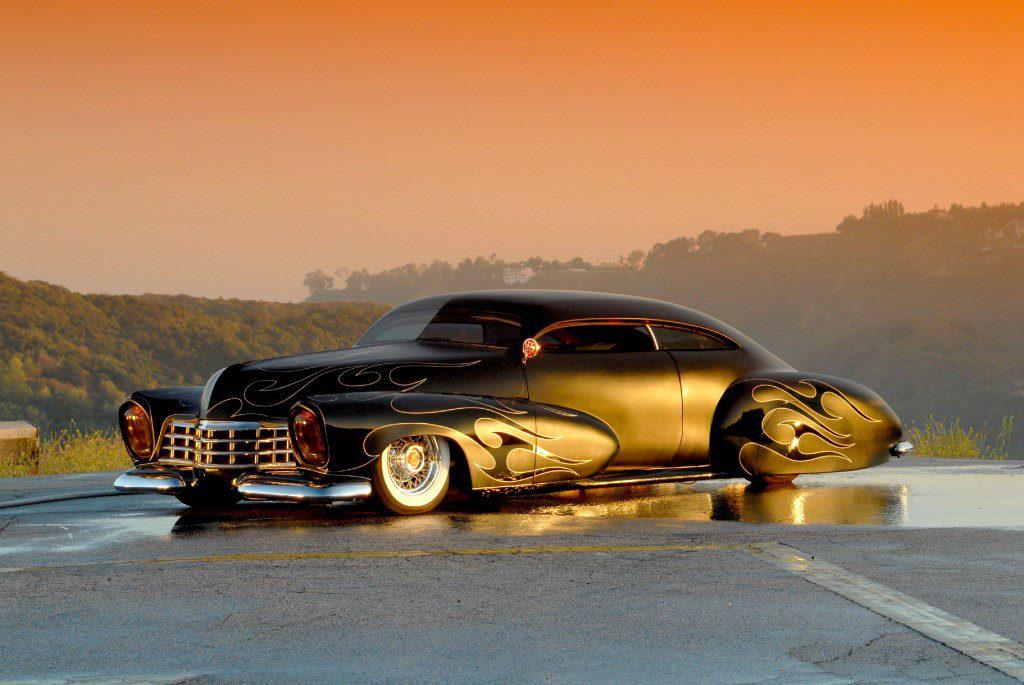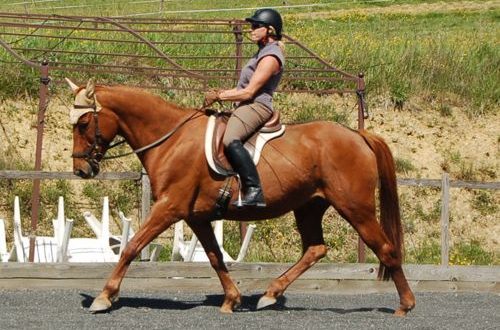
cowboy cadillac
Many breeds of horses have obvious external features that make them easy to recognize. The Arabian has a “pike” head profile, the Frisian has a luxurious mane, tail and brushes on its legs, the Indian Marwari has funny twisted ears. Seeing a Missouri Foxtrotter calmly standing, you are unlikely to be able to determine its breed. Until he budges and hurries somewhere in his signature trot.

Photo Shoot: kohuku.ru
The birthplace of the Missouri Foxtrotter, as you might guess from the name, is the United States, Missouri. After Missouri became a state in 1821, the first settlers arrived, mostly from Kentucky, Tennessee and Virginia, bringing with them their finest riding horses. Since the animals were not adapted to the new habitat and were not very suitable for safe and comfortable trips in the mountains, a long period of experimentation began to develop a new local breed. The main requirement was the ability of the horse to carry the rider over long distances with a minimum expenditure of strength, both of the animal itself and of the person. In other words, reliability and convenience. To do this, plantation horses from the south were crossed with Arabian horses and Morgans, later they also added the blood of American riding and Tennessee walkers. The “light-gaited” horses that were imported to the American coast during the colonial era also left their mark on the newly formed breed.
To the rhythm of the foxtrot
The main feature that distinguishes the Missouri Foxtrotter from other breeds is its unique gait, known as the foxtrot or, in the common people, the “fox trot”. When moving with a foxtrot, the front legs of the horse move at a fast pace (from the side it is very similar to walking for people), and the hind legs – at a trot, and they are not placed with a distinct rhythm, as in a normal trot, but slip far under the body, stepping on the tracks of the front ones. The result is a smooth and comfortable gait that the horse can move for a long time without feeling tired.
It is worth noting that the ability to walk with the front legs and trot with the hind legs is innate, but it can be developed through long training. With a comfortable gait and a speed of five to eight miles per hour, the Missouri Foxtrotter quickly gained popularity in the United States – especially among such long-distance travelers as ranchers, farmers, doctors, sheriffs, which even earned them the nickname “Cowboy’s Cadillac” .
Window to Europe
In 1948, the Missouri Foxtrotter Breed Association was founded in Ava, Missouri, by fifteen individuals with an interest in preserving the breed. A few years later, in the mid-1950s, the first fox trotters were imported to Europe, immediately becoming known as “white-maned piebald horses”. However, the first “official introduction” to the European public took place only in 1992 during the German horse show Hyppologica.
In the same year, the European Association of the Missouri Foxtrotter was created, which became a branch of the American Association. The first specialized European championship for the Missouri Foxtrotter was held in 1996, and in 2010 the European Foxtrotter Association began cooperation with the Free University of Berlin. This set the criteria for the European Foxtrotter Studbook to uphold and protect breed standards, characteristics and qualities. Only those horses that met these standards and had previously passed “fitness tests” were allowed to be bred.
To date, a total of about 52 thousand animals have been registered in the USA, Canada, Austria and Germany. In Russia, there are no stud farms and breeding farms for breeding this breed; registered foxtrotters can also be counted on the fingers.
Exterior
Having endowed the breed with such a unique gait, nature, however, did not particularly distinguish these horses externally: representatives of this breed do not have special signs by which they could immediately be recognized as representatives of many other breeds.
The Missouri Foxtrotter has a graceful proportional head with a muzzle narrowed in snoring, a neat neck, a deep and rounded body with well muscled shoulders and a moderately short back. The hind legs tend to be saber. The height at the withers is from 142 to 163 cm. As for the suit, the Missouri Foxtrotters come in “all colors of the rainbow”: bay, black, gray, red, caraca, tan, nightingale, isabella and piebald.
“Mileage” Matters
The Missouri Foxtrotter Association (MFTHBA) has a number of programs to popularize and develop the breed, in which any owner of a horse registered with the Association can participate.
“There is nothing better in life than being rewarded for what you love!” – says the slogan of one of the most popular such programs, Fox Trot America. This program is aimed at those who like to spend time in the saddle, and is, in fact, an endurance contest, and its main goal is to find out the time spent by the foxtrotter “in motion”. Moreover, the circumstances under which this movement occurs do not play any role: work on the ranch, and training in the arena, and a walk in the forest, and other types of activity are taken into account. Each hour spent on the move will allow the program participant to receive recognition and awards from the Missouri Fox Trotter Association (MFTHBA). 100, 250, 500, 750 and 1000 hours of driving are rewarded.
Another program, National Trail Ride, rewards multi-day hikers. Participants of 10 such hikes organized by the Association receive a commemorative belt buckle, and participants of 20 hikes receive a sweatshirt with a unique design. Through close collaboration with various organizations, the Association provides an opportunity for the Missouri Foxtrotter to demonstrate its unique abilities clearly and visually, in a competitive atmosphere.
So, for example, foxtrotters are regular participants in distance horse races at distances of 25, 35, 50 and more miles, organized by the American Conference on Distance Horse Races (AERC).
No less active participation in the life of the breed is taken by the North American Distance Running Conference (NATRC), which provides long-distance trips, and the Western Dressage Association of America (WDAA), which supports such a popular discipline in the West recently as Western dressage, skillfully combining classic dressage with the traditions of the Wild West.
“Family” horse
The days when the horse was the only means of transportation are gone, but the Missouri Foxtrotters have not lost their popularity. Thanks to their comfortable gait and endurance, these horses are in demand in distance horse races, all kinds of horse shows and riding. In addition, the foxtrotter has long earned the reputation of a “family horse”, since its gentle nature, short stature and that same unique “fox trot” make it an excellent “teacher” for children and a reliable companion for older people who already find it difficult to ride. These same qualities make him an ideal horse for hippotherapy.
All this allows us to confidently assert that the Missouri Foxtrotter will carry its rider for more than one hundred miles.
Source





